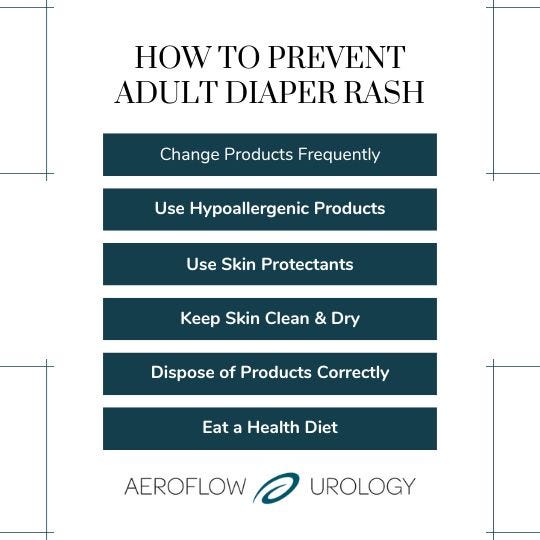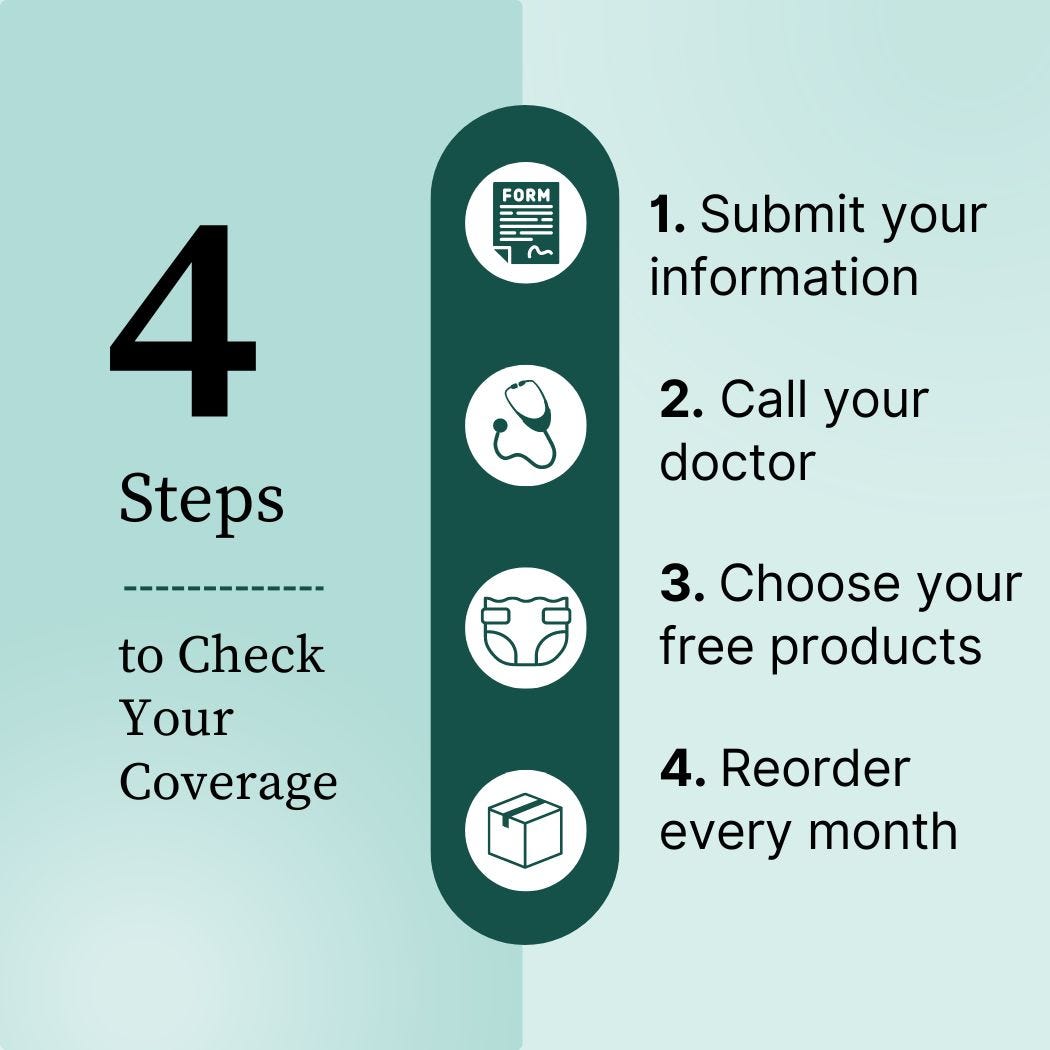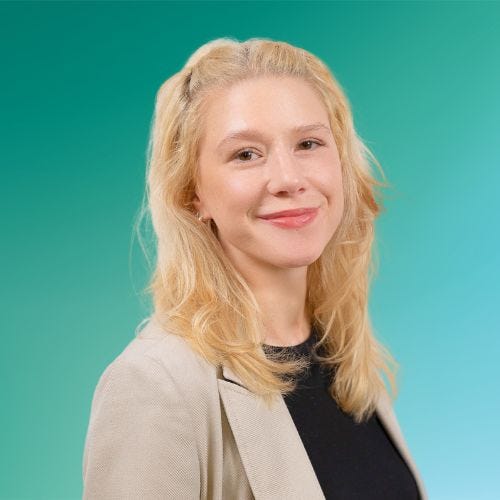Dealing with burning and itching skin caused by adult incontinence products is no fun. Unfortunately, if you or your loved one wears these products, you may have experienced the discomfort caused by adult diaper rash.
Sometimes called diaper dermatitis, diaper rash is caused by a couple different things, like moisture buildup, infection, and chafing just to name a few. The good news is that it can be treated and likely avoided with proper care. We’ll cover how to identify, treat, and prevent adult diaper rash so your skin stays healthy.
What Is Adult Diaper Rash?
Adult diaper rash is a condition that occurs when the skin that comes into contact with your adult incontinence products becomes irritated, inflamed, or infected. This is sometimes referred to as diaper dermatitis. Oftentimes, the genital, buttocks, or thigh areas are affected.
Why Do Adults Get Diaper Rash?
Although we commonly hear the term “diaper rash” when referring to children, adults who wear bladder or bowel control products can develop diaper rash just as easily.
Check Your Eligibility
2 Easy Steps
Discover the continence care essentials available through your Medicaid plan.
Causes of Adult Diaper Rash
Prolonged Exposure to Moisture.
When using any type of incontinence product, prolonged wetness is never a good thing! Moisture buildup - which can be caused by waiting too long between diaper changes, wearing a product that isn’t absorbent enough, or chronic diarrhea can lead to irritated and thus vulnerable skin that can therefore break down easily.
Friction & Rubbing.
When your skin rubs against your incontinence product, it creates friction. This is known as chafing, which can lead to skin irritation. Another cause of chafing is wearing an incontinence product that is too large or too small for your body.
Fungal or Bacterial Infections.
Fungal infections such as yeast infections (Candida), and bacterial infections like urinary tract infections (UTIs), can cause skin irritation because they typically occur when your incontinence product has been moist for an extended period of time.
Allergic Reactions.
Some individuals may have sensitive skin that reacts to chemicals, fragrances, or other allergens in adult incontinence products.
Improper Hygiene.
Urine and fecal matter contain bacteria, which, when left on the skin for long periods of time, can cause inflammation and irritation. This may happen if you’re not changing your absorbent product frequently enough or if you’re not cleaning waste off your body properly.
Eczema or Psoriasis.
Individuals living with certain skin conditions or medical conditions, like eczema and psoriasis, might develop adult diaper rash more easily since their skin may already be vulnerable and dry.
What Are the Symptoms of Adult Diaper Rash?
Mild Diaper Rash
- Pink, itchy skin.
- Red, raw patches of skin.
- Skin pain or tenderness in the thigh or diaper area.
Severe diaper rash may result in the following symptoms:
Severe Diaper Rash
- Red, burning skin.
- Red bumps that ooze.
- Skin that peels or bleeds.
What Is the Best Way to Treat Adult Diaper Rash?


Home Remedies
If your diaper rash is mild and not caused by a fungal or bacterial infection, you can most likely treat it at home with a combination of one of the following skin care methods.
- Wash the Affected Area. Keep the area that's affected clean by rinsing it with a mild soap cleanser and warm (not hot) water. Be sure there’s no leftover soap on the skin, and pat the area dry. You should let your skin dry all the way before putting on a new incontinence product.
- Let the Area Breathe. If you have diaper rash, it’s a good idea to expose the affected area to the air. Airflow may help it heal and dry.
- Use a Diaper Rash Cream. Over-the-counter diaper rash ointments that contain zinc oxide are great for healing diaper rash. These creams help create a moisture barrier for your skin to protect it while healing it at the same time.
- Wear the Right Incontinence Products. If your adult incontinence briefs or protective underwear aren’t absorbent enough or don’t fit correctly on your body, it can lead to wetness and friction. To check that your product size and absorbency level is correct, you can use our Incontinence Product Guides.
In-Office Treatments
If your rash is more severe, it may be best that you see a healthcare provider so they can treat you properly.
- Antifungal Creams. If you have a yeast infection, your provider may recommend or prescribe you a topical antifungal cream to treat it.
- Steroid Creams. If your diaper rash becomes severe with red, swollen, bumpy, or wounded skin, your healthcare provider may prescribe a steroid cream. Use this as directed to heal your rash.
How Can You Prevent Adult Diaper Rash?
Take the following steps to prevent yourself or your loved one from developing a diaper rash.
- Change your incontinence products frequently. Try to change any products you use as soon as they’re dirty. This includes adult diapers, adult protective underwear, bladder control pads, booster pads, and bedpads.
- Use hypoallergenic products with sensitive skin. If you’ve had reactions to certain adult incontinence products in the past, be sure you’re checking what materials the products you’re using are made out of. This will help avoid any skin irritation or allergic reactions.
- Use skin protectants. Barrier creams or ointments can help prevent dry skin and diaper rash, so apply these types of over-the-counter creams a few times daily or as needed when changing incontinence products. Petroleum based products like Vaseline and Aquaphor are also great maintenance skin protectants.
- Always keep your skin clean and dry. One of the best ways to prevent adult diaper rash is to maintain proper hygiene. Shower or bathe your body when needed and gently pat your skin dry afterward. Ensure your skin is dry before putting on your incontinence products. If you’re a caregiver, remember to wash your loved one frequently.
- Dispose of incontinence products correctly. Keep things clean and prevent the spread of bacteria from fecal matter by disposing of your soiled incontinence products appropriately, even in public.
- Eat a healthy diet. Eat enough whole and fresh foods, eat lean proteins, and stay hydrated to help diaper rash heal faster. As a bonus, learn about which foods and drinks irritate your bladder and avoid them while healing diaper rash or if you have incontinence.
References
Adult Diaper Rash: Treatment, Prevention, and More. (2017, September 29). Healthline. https://www.healthline.com/health/adult-diaper-rash#TOC_TITLE_HDR_1
Adult Diaper Rash: What You Need To Know. (2023, February 6). My Caring Plan. https://www.mycaringplan.com/blog/adult-diaper-rash-what-you-need-to-know/
Jenkins, S. (2022, August 2). How To Prevent And Treat Adult Diaper Rash. National Association for Continence. https://nafc.org/bhealth-blog/how-to-prevent-and-treat-adult-diaper-rash/#:~:text=What%20is%20adult%20diaper%20rash
Disclaimer
Information provided on the Aeroflow Urology blog is not intended as a substitute to medical advice or care from a healthcare professional. Aeroflow recommends consulting your healthcare provider if you are experiencing medical issues relating to incontinence.













